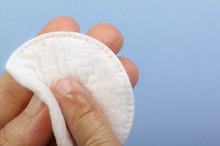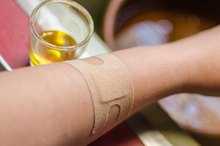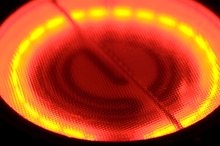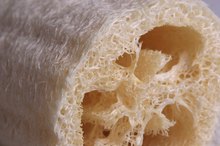What does fact checked mean?
At Healthfully, we strive to deliver objective content that is accurate and up-to-date. Our team periodically reviews articles in order to ensure content quality. The sources cited below consist of evidence from peer-reviewed journals, prominent medical organizations, academic associations, and government data.
The information contained on this site is for informational purposes only, and should not be used as a substitute for the advice of a professional health care provider. Please check with the appropriate physician regarding health questions and concerns. Although we strive to deliver accurate and up-to-date information, no guarantee to that effect is made.
How to Treat Wax Hair Removal Burns
Waxing is a technique of removing unwanted hair from the upper lip, eyebrows, legs and the bikini line. You place heated hair removal wax on the hair, cover the wax with a cloth and leave it there for several minutes. When you pull the cloth away, it removes the wax and unwanted hair as well. You may burn yourself if you apply the wax while it's too hot. Several treatments can relieve wax hair removal burns 1.
Run cool water over your burned skin. Do this immediately and allow the water to run for at least five minutes, as recommended by the U.S. National Institutes of Health. You also can soak your burned skin in cool water in a bathtub. If the burn is on your upper lip or eyebrows and running water over the skin is difficult, apply a cool, wet washcloth.
How to Make Snowboarding Wax
Learn More
Wrap some ice or an icepack in a washcloth. Hold the washcloth to your burned skin to reduce pain and swelling.
Apply 100 percent pure aloe vera gel to the burn. Use a brand with no additives, or remove a leaf from an aloe vera plant and use gel from the inside. Place some gel in the palm of your hand and use your fingertips to gently dab the gel onto the burned area. The University of Maryland Medical Center (UMMC) recommends applying aloe vera gel three or four times daily for soothing and healing.
How to Treat Muffler Burns
Learn More
Cover your burned skin with a dry, sterile bandage or clean dressing. The NIH advises protecting the skin from further irritation.
Take an over-the-counter pain medication if the pain continues to bother you. Ibuprofen, naproxen and aspirin are anti-inflammatory medications as well as pain relievers, and acetaminophen reduces pain as well.
Tips
Refrigerate the aloe vera gel before applying it for an added cooling effect.
Warnings
Do not apply ice directly to burned skin. Seek medical attention if the burned skin is broken or blistered.
Related Articles
References
- NIH: Treating Burns
- UMMC: Treating Burns
- Lawrence, R., Tripathi, P., & Jeyakumar, E. (2009). Isolation, purification and evaluation of antibacterial agents from Aloe vera. Brazilian Journal of Microbiology, 40(4), 906-915.Â
- Valko, M., Leibfritz, D., Moncol, J., Cronin, M. T., Mazur, M., & Telser, J. (2007). Free radicals and antioxidants in normal physiological functions and human disease. The International Journal of Biochemistry & Cell Biology, 39(1), 44-84.Â
- Fox, L. T., Du Plessis, J., Gerber, M., Van Zyl, S., Boneschans, B., & Hamman, J. H. (2014). In vivo skin hydration and anti-erythema effects of Aloe vera, Aloe ferox and Aloe marlothii gel materials after single and multiple applications. Pharmacognosy Magazine, 10(Suppl 2), S392. Â
- Surjushe, A., Vasani, R., & Saple, D. G. (2008). Aloe vera: A short review. Indian Journal of Dermatology, 53(4), 163. Â
- Lawrence, R., Tripathi, P., & Jeyakumar, E. (2009). Isolation, purification and evaluation of antibacterial agents from Aloe vera. Brazilian Journal of Microbiology, 40(4), 906-915.Â
- Valko, M., Leibfritz, D., Moncol, J., Cronin, M. T., Mazur, M., & Telser, J. (2007). Free radicals and antioxidants in normal physiological functions and human disease. The International Journal of Biochemistry & Cell Biology, 39(1), 44-84.Â
- Fox, L. T., Du Plessis, J., Gerber, M., Van Zyl, S., Boneschans, B., & Hamman, J. H. (2014). In vivo skin hydration and anti-erythema effects of Aloe vera, Aloe ferox and Aloe marlothii gel materials after single and multiple applications. Pharmacognosy Magazine, 10(Suppl 2), S392. Â
- Panahi, Y., Khedmat, H., Valizadegan, G., Mohtashami, R., & Sahebkar, A. (2015). Efficacy and safety of Aloe vera syrup for the treatment of gastroesophageal reflux disease: a pilot randomized positive-controlled trial. Journal of Traditional Chinese Medicine, 35(6), 632-636.
- Surjushe, A., Vasani, R., & Saple, D. G. (2008). Aloe vera: A short review. Indian Journal of Dermatology, 53(4), 163. Â
- Vardy, D. A., Cohen, A. D., Tchetov, T., Medvedovsky, E., & Biton, A. (1999). A double-blind, placebo-controlled trial of an Aloe vera (A. barbadensis) emulsion in the treatment of seborrheic dermatitis. Journal of Dermatological Treatment, 10(1), 7-11.
Writer Bio
Shelley Moore is a journalist and award-winning short-story writer. She specializes in writing about personal development, health, careers and personal finance. Moore has been published in "Family Circle" magazine and the "Milwaukee Sentinel" newspaper, along with numerous other national and regional magazines, daily and weekly newspapers and corporate publications. She has a Bachelor of Science in psychology.








